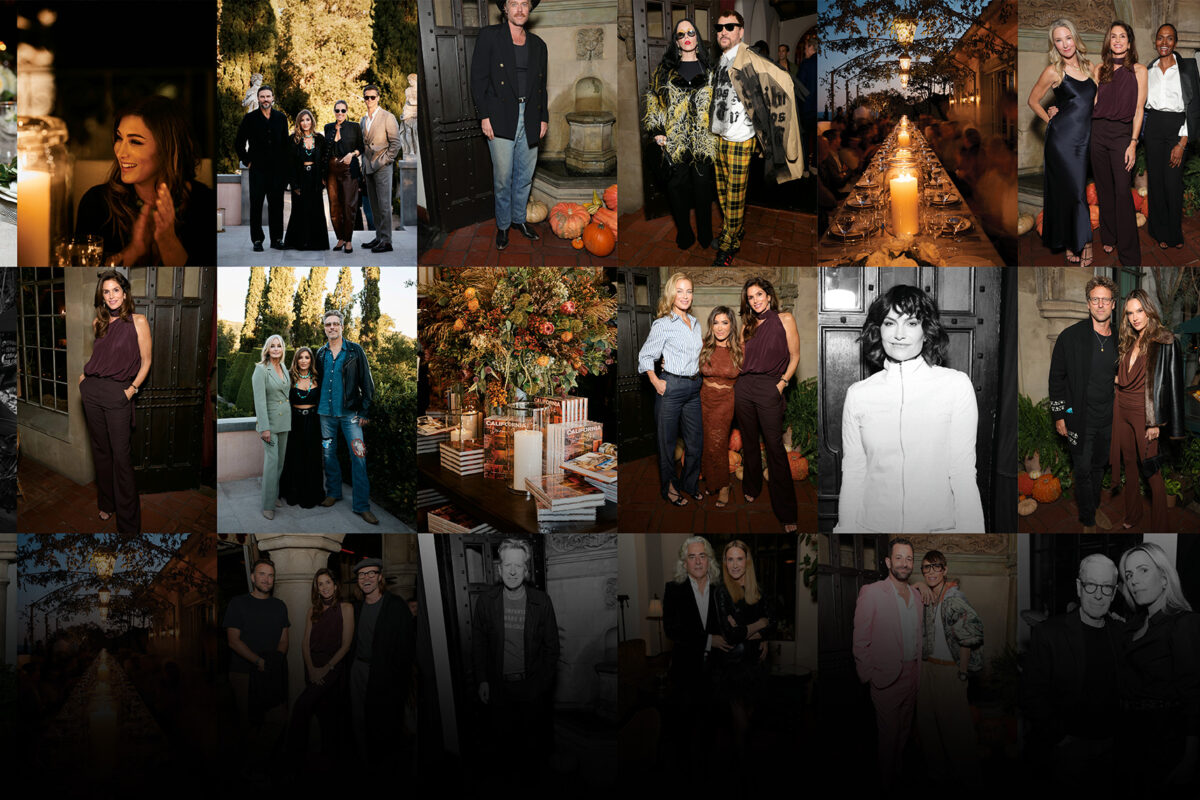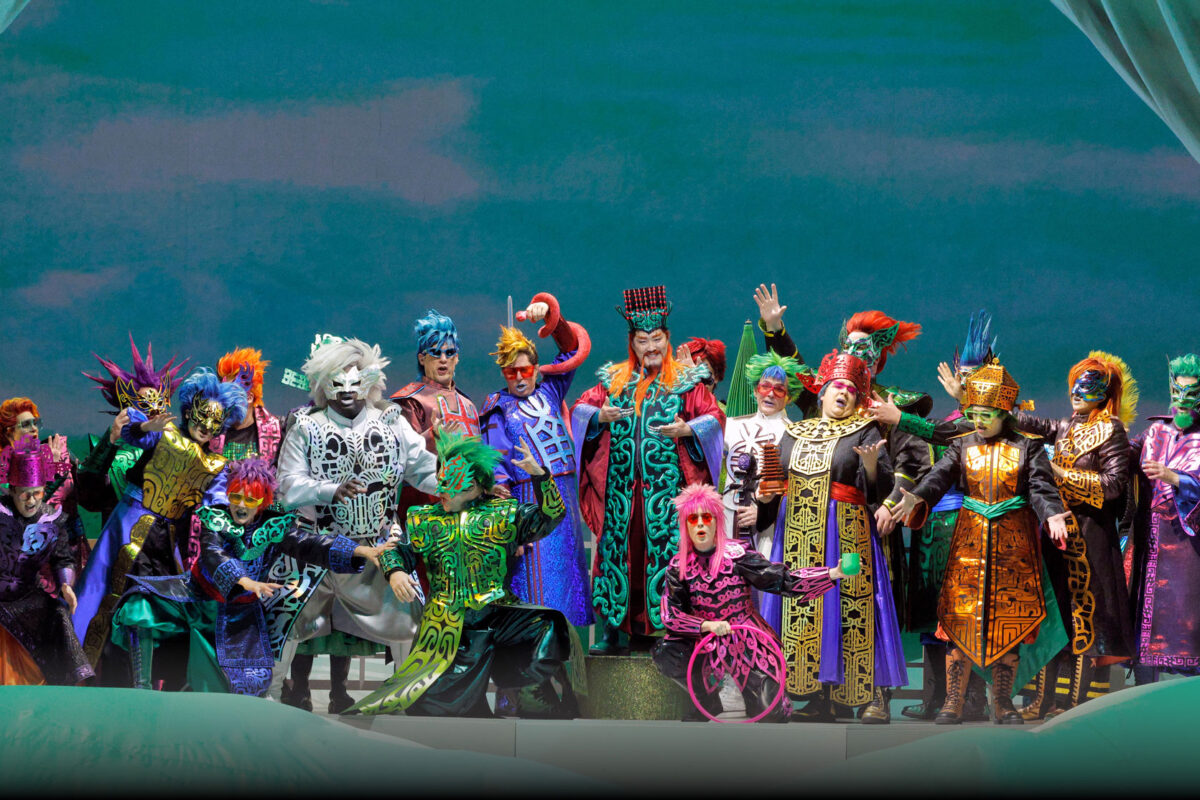An audience with M, the Renaissance man behind 50-years-strong Mr Chow
Words by ELIZABETH VARNELL
Photography by RAINER HOSCH
Born in Shanghai, world-renowned restaurateur and artist Michael Chow—who these days goes by the single—letter moniker M—studied art and architecture at Central Saint Martins in London during the 1950s before dedicating himself to painting for the next 10 years. That went “nowhere,” he says, “because of racism and all that.” In 1968, M put down his brushes to create Mr Chow, a dramatic new theatrical restaurant concept in Knightsbridge using Chinese cuisine as a cultural bridge. What followed is the stuff of legend: Nightly guests, including The Rolling Stones, The Beatles and all of swinging London, gathered in his art-filled eatery to see and be seen. From that moment on, M and art epicenters traveled in tandem. He opened stunning Mr Chow outposts in New York City, Los Angeles and other major cities, regularly hosting parties for such painters as Jean-Michel Basquiat and Julian Schnabel.
To celebrate the past five decades, M compiled Mr Chow: 50 Years (DelMonico Books/Prestel Publishing, $50), a new volume filled with images from his personal archive, including a mixed–media painting he commissioned from English pop artist Peter Blake (the mind behind the album art for Sgt. Pepper’s Lonely Hearts Club Band) for the original Mr Chow. The work helped launch M’s ever-expanding portrait collection. Similarly, the restaurant’s guest book-turned-drawing book, also photographed in the new volume, is awash with images penned by Francis Bacon, Keith Haring, Ed Ruscha, Damien Hirst, Urs Fischer, Richard Prince and countless other art-world luminaries, many of whom also created images of M and his family. Having made his return to painting a few years ago, creating heavily textured, monumental abstract canvases, M recently sat down in his new 57,000-square-foot Vernon studio with L.A.-based artist Jonas Wood for a
conversation on portraiture, poker and perfect timing.
M: How did we meet?
Wood: We have mutual friends—your daughter China and Alex Israel as well—but I first went to Mr Chow for a dinner following Richard Prince’s “Cowboys” show at the Gagosian [in Beverly Hills] just before the Oscars in 2013. Then we started playing poker occasionally—I’m a horrible poker player; you’re pretty good.
M: There’s a film [on high-stakes Hollywood poker] now, you know, Molly’s Game.
Wood: Yes, and here we are away from the poker table and in your new studio. It’s been 50 years since your London restaurant opened with art by David Hockney and Peter Blake, who also painted your portrait. When did you start collecting?
M: I commissioned a symbolic painting about racism from Blake, and he came up with a portrait of me and wrestlers and Italian waiters and Japanese wind chimes—it mixed cultures, the antithesis of racism. At that time, no artist did portraiture.
I’m a born collector, I collect everything. So I said, ‘It might be fun to collect portraits.’ This was pre-Andy [Warhol], pre-everything. It was very uncool.
Wood: Let’s describe the Keith Haring portrait, the painting with you in a bowl of soup.
M: First of all, green prawns with six arms, in Chinese superstition, or whatever, is [lucky]. Keith liked to eat the soup and made me very ugly in a bowl of noodles—very pop and all that—so it was a powerful thing.
Wood: Such a great painting, it’s not like Haring made tons of portraits of people either. It’s very unique. But you’ve always had a striking look and a very deep interest in fashion. For me, as one of the artists who’s made a portrait of you, you have a very unique look. You opened a restaurant and became part of the culture you were creating. You were identifiable.
M: Well, I don’t like my look too much. But I do think Andy brought back portraiture again, single-handedly.
Wood: When did he take your picture?
M: 1985. Late, very late for him, for his portraiture. Now portraiture is right in the forefront. Things change so much, they’re always changing. Jonas, you do fantastic portraiture.
Wood: I knew about all the amazing portraits that had been done of you and I thought, ‘I have to make a portrait.’ I had taken some pictures in your house, and, originally, I was going to make a painting of you playing poker, but then it just became a straight portrait, almost like a passport photo. In the book, you mentioned that I made you look old with lines and everything, but you look amazing for 79 years—though Wikipedia says 78. Is that your Hollywood age?
M: I’m just vain, that’s all. No, my mother changed my birthdate when I was young to try to delay me going into the selective service in England. But let’s talk a little less about my age.
Wood: Let’s talk about the drawing book, a sort of guest book at the restaurants. It’s been photographed for your new book, and some of my friends have even drawn in it, so I always knew about it. Over the last few years, you’ve asked me to make a couple of images. When I was younger, I actually couldn’t draw on the fly. I wanted little elements of my paintings to be part of my language when I signed something, so I developed it over the past couple of years.
M: Some of the drawings are very serious. On that subject, Jean-Michel Basquiat and Cy Twombly both had different points of view. Basquiat did underground graffiti and he was always threatened by the police, so he had to do it very quickly. Then you have Cy Twombly, who wanted to draw in the dark using, instead of the right hand, the left hand. For artists—like my father, who was a great artist—the technique and know-how is in the way. You want to get rid of technique. We want to get back to the childlike, the internal spontaneity.
Wood: Even a line can define an artist.
M: Right.
Wood: Twombly signed a plate for you that barely has any information on it, but you know that Twombly’s hand drew it—same with Basquiat. That’s what’s interesting about that sketchbook to me, because all these people that drew things are these superstars, but they’re not just defined by being superstars; they have their own line, their own mark that defines them.
M: Back to the mark, at the moment, we’ve got 1.4 billion Chinese, and every one of them can write calligraphy. And yet in the history of China there have only been a few [calligraphy artists] who’ve been great. Through them, the Chinese have already distilled everything into the power of calligraphy, what the Chinese call “one breath.” Everything is in there. Same with Twombly—when he makes a mark, when Jonas makes a mark, these marks are personal, internal and true to one’s own time.
Wood: And the drawing book built on itself. There’s this thing in the art world, as you know, people want to touch what other artists have touched. Your restaurants have been a place for artistic people to come together to celebrate art, creativity.
M: And classical musicians, film directors, all the creative energy. Federico f—ing Fellini, Orson Welles. What’s so amazing, maybe through luck, my timing has always been perfect. If you look at all these artists in the book over 50 years, everybody has become somebody.




